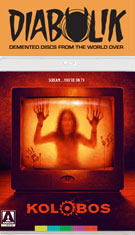
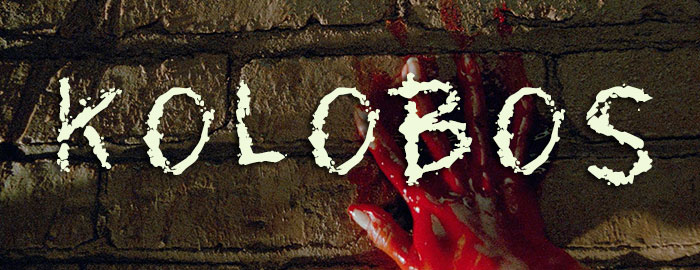


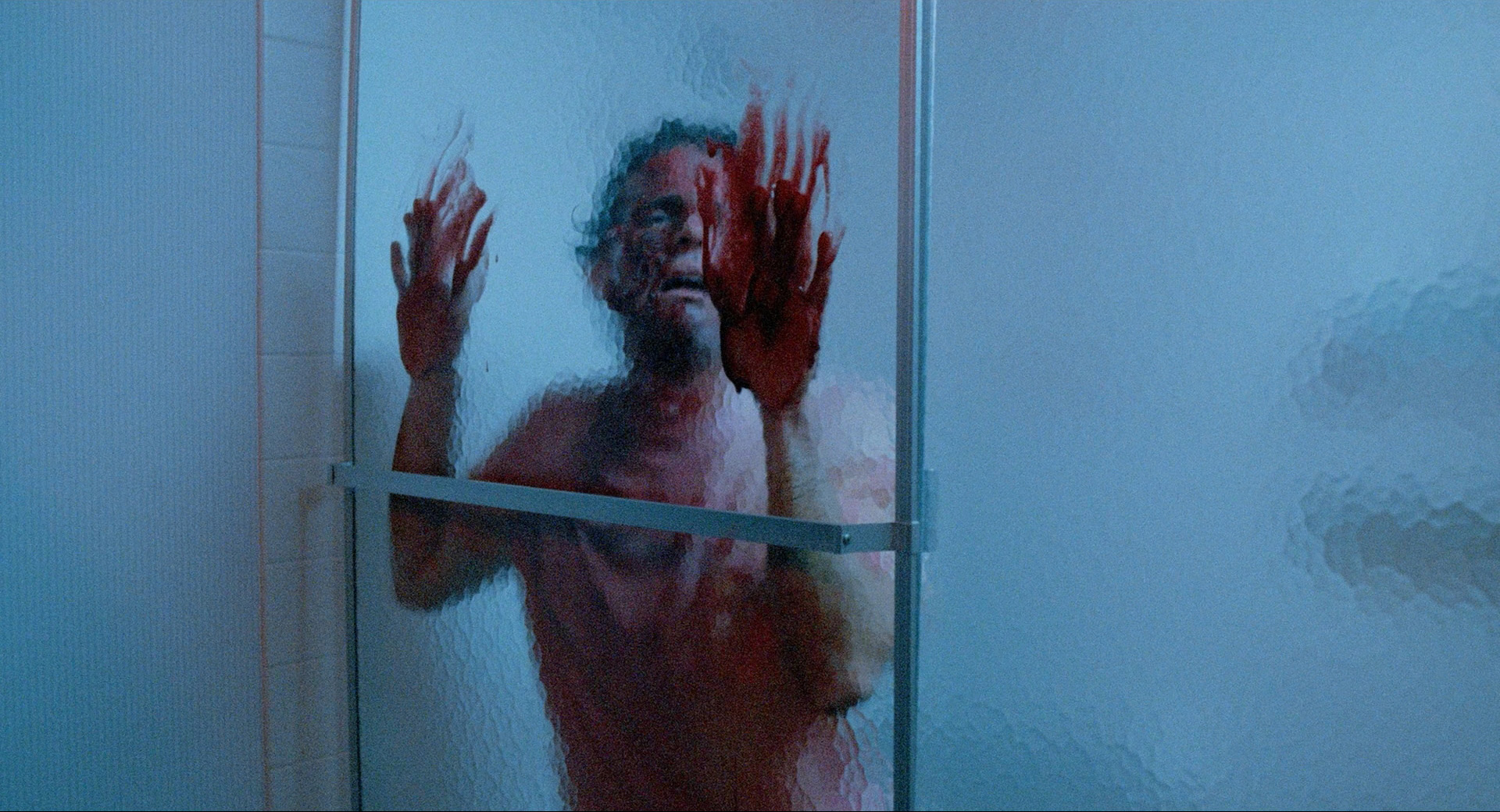 to provoke waves of
to provoke waves of 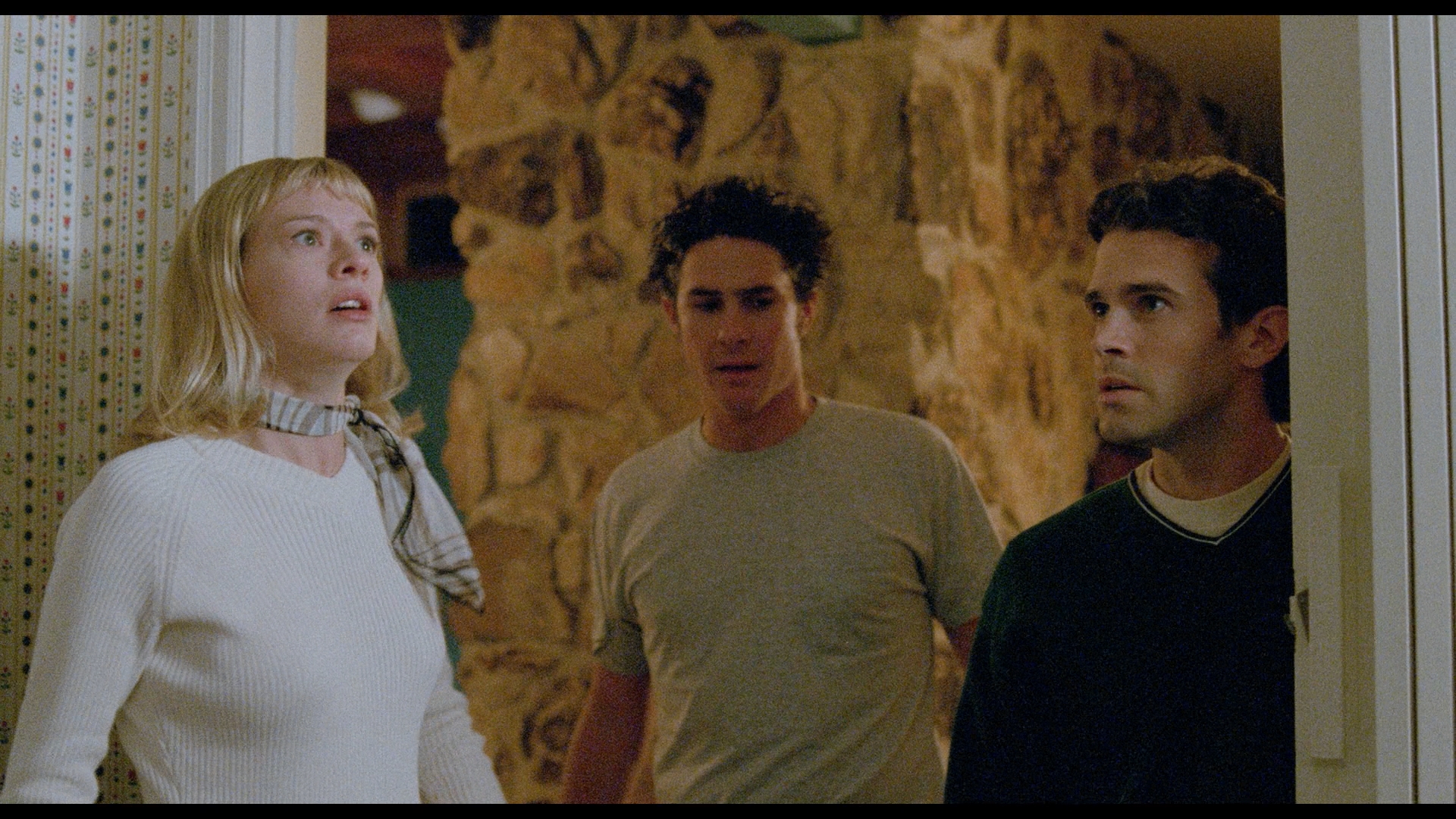 nostalgia for any horror fan who lived through the '90s, the awkwardly-titled Kolobos seemed to be another in a line of fan homes to Italian horror films when it came out (a la The Dead Hate the Living) with its open nodes to Dario Argento and company. However, the 1999 film's premise of a reality entertainment experiment yielding a gory body count turned out to be ahead of its time, paving the way for very similar films like My Little Eye and the worst of the bunch, Halloween: Resurrection, both in 2002. Though apparently filmed on a very low budget and hampered by some narrative issues, the film sports visual style to burn, some extraordinarily graphic murder sequences, earnest performances, and a crackerjack premise.
nostalgia for any horror fan who lived through the '90s, the awkwardly-titled Kolobos seemed to be another in a line of fan homes to Italian horror films when it came out (a la The Dead Hate the Living) with its open nodes to Dario Argento and company. However, the 1999 film's premise of a reality entertainment experiment yielding a gory body count turned out to be ahead of its time, paving the way for very similar films like My Little Eye and the worst of the bunch, Halloween: Resurrection, both in 2002. Though apparently filmed on a very low budget and hampered by some narrative issues, the film sports visual style to burn, some extraordinarily graphic murder sequences, earnest performances, and a crackerjack premise. 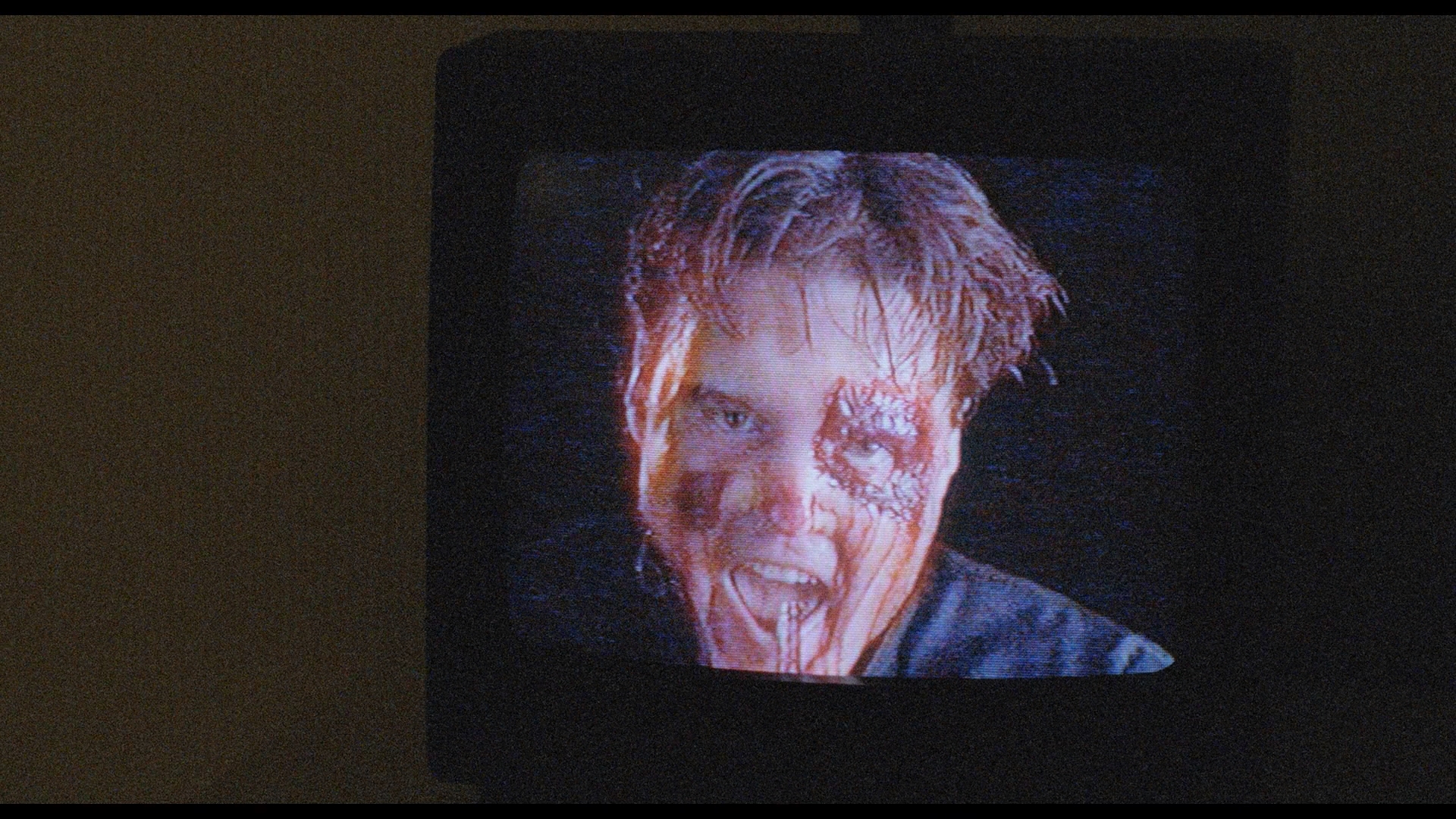 include a low budget soft porn/horror actress, a struggling stand-up comedian, a smart-ass fast food worker, and a clean cut college guy. The fifth guinea pig,
include a low budget soft porn/horror actress, a struggling stand-up comedian, a smart-ass fast food worker, and a clean cut college guy. The fifth guinea pig, 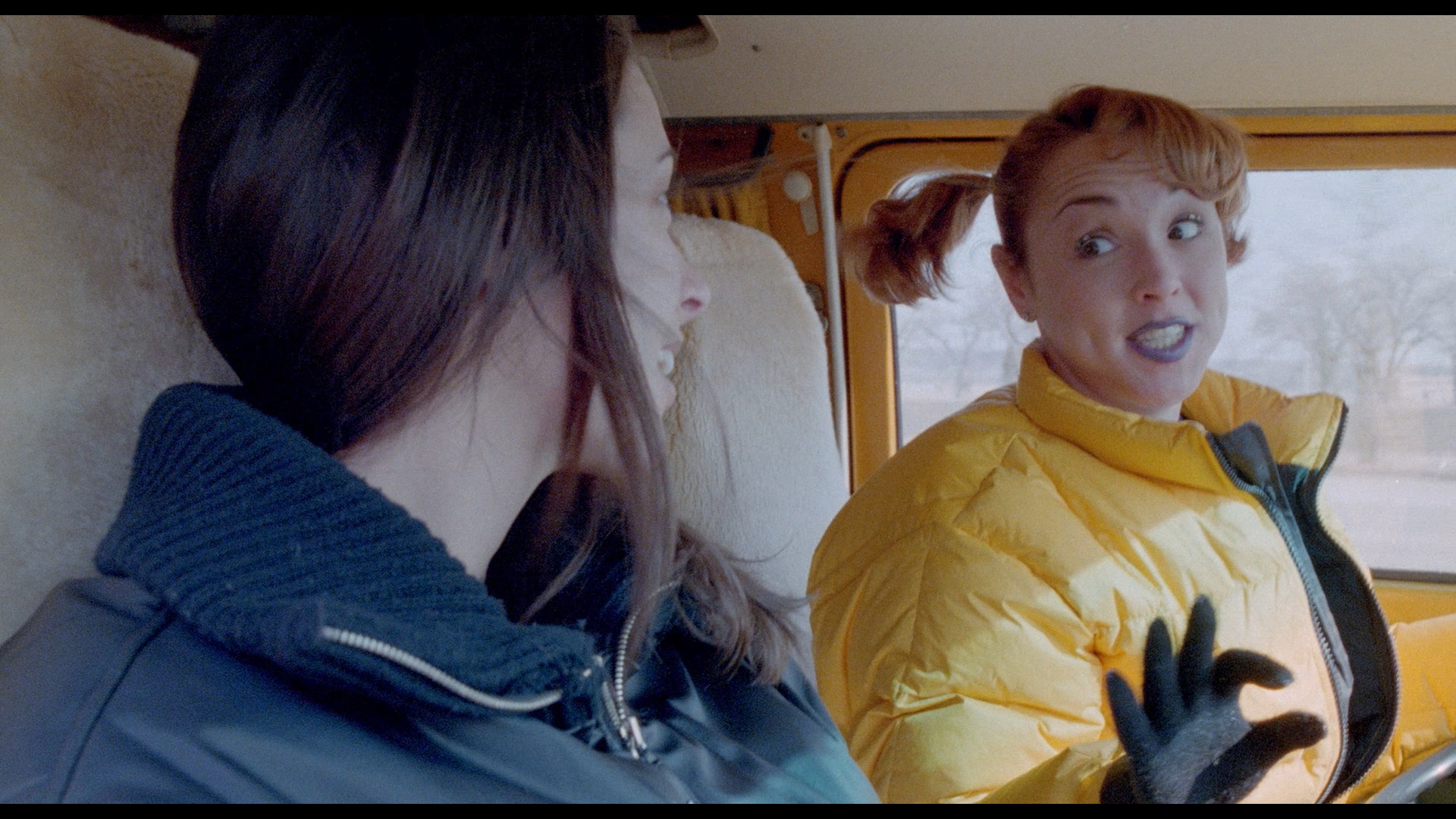 Kyra (soap actress Weber, sort of a more morose Jennifer Love Hewitt by way of Amy Acker), is an anxiety-riddled young psychiatric patient prone to doodling gruesome images. The "actors" convene in an isolated house where video cameras monitor their every move, though the director stops by to offer them some pizza and offer some general guidelines about the project. Unfortunately, after he leaves, the windows and doors are all sealed with unbreakable metal plating, and lethal booby traps begin decimating the young hopefuls at the most unexpected moments.
Kyra (soap actress Weber, sort of a more morose Jennifer Love Hewitt by way of Amy Acker), is an anxiety-riddled young psychiatric patient prone to doodling gruesome images. The "actors" convene in an isolated house where video cameras monitor their every move, though the director stops by to offer them some pizza and offer some general guidelines about the project. Unfortunately, after he leaves, the windows and doors are all sealed with unbreakable metal plating, and lethal booby traps begin decimating the young hopefuls at the most unexpected moments.
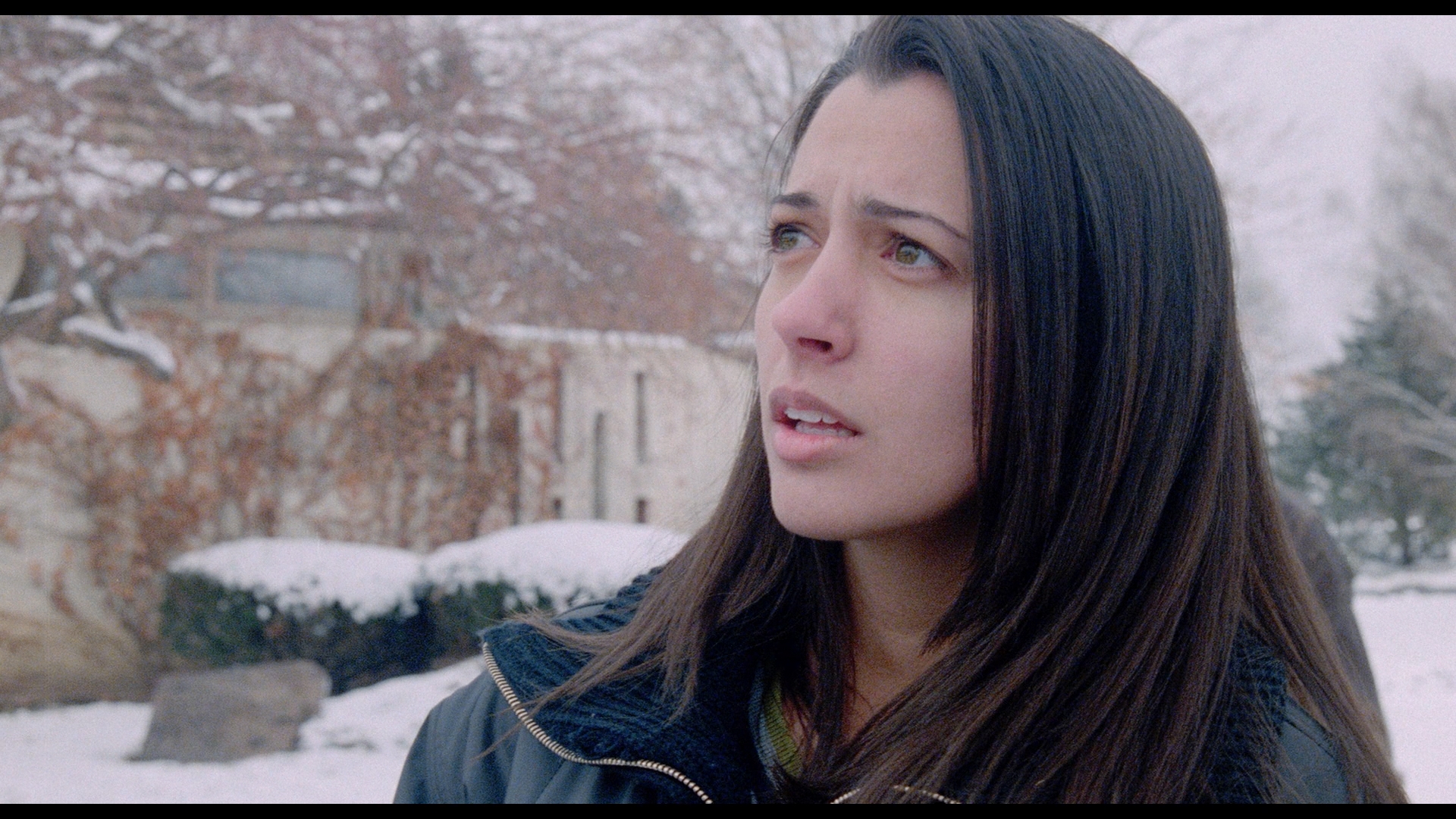 at
at 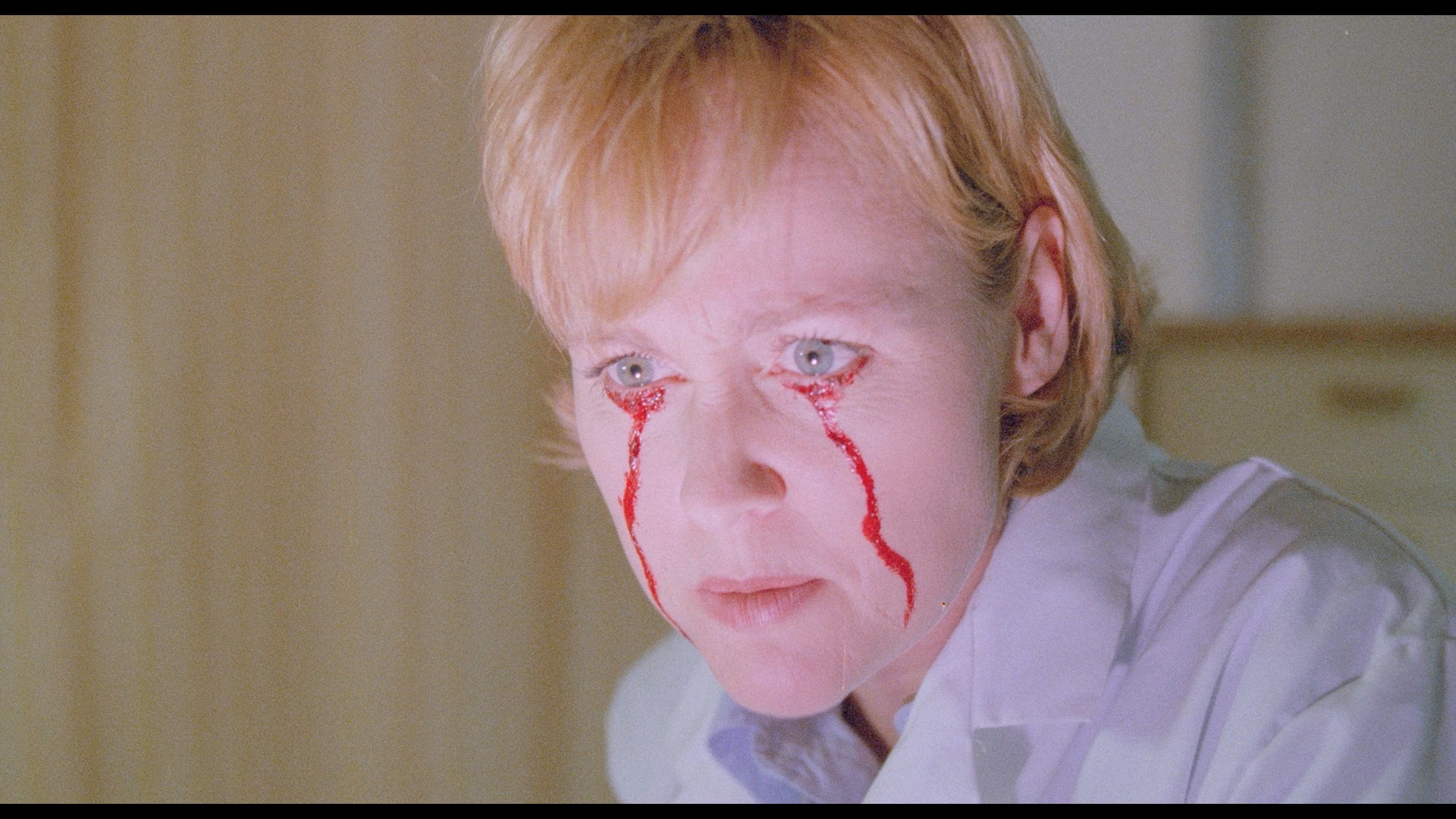 the beginning, an amusing touch considering the tribute to her antler murder in Silent Night, Deadly Night performed later in the film. None of the characters is especially appealing, but the actors all do a passable job and conquer the sometimes scrappy dialogue recording, which suffers from that familiar, hollow "made for video" sound. Unfortunately, like most horror films in the past couple of years, Kolobos proves to be too clever for its own good and paints itself into a corner. Just when the film works up to a creepy, tense climax, the film stops dead in its tracks, refuses to explain itself, and lumbers along for a ten minute epilogue that leaves you with a lot of narrative muddy water.
the beginning, an amusing touch considering the tribute to her antler murder in Silent Night, Deadly Night performed later in the film. None of the characters is especially appealing, but the actors all do a passable job and conquer the sometimes scrappy dialogue recording, which suffers from that familiar, hollow "made for video" sound. Unfortunately, like most horror films in the past couple of years, Kolobos proves to be too clever for its own good and paints itself into a corner. Just when the film works up to a creepy, tense climax, the film stops dead in its tracks, refuses to explain itself, and lumbers along for a ten minute epilogue that leaves you with a lot of narrative muddy water. 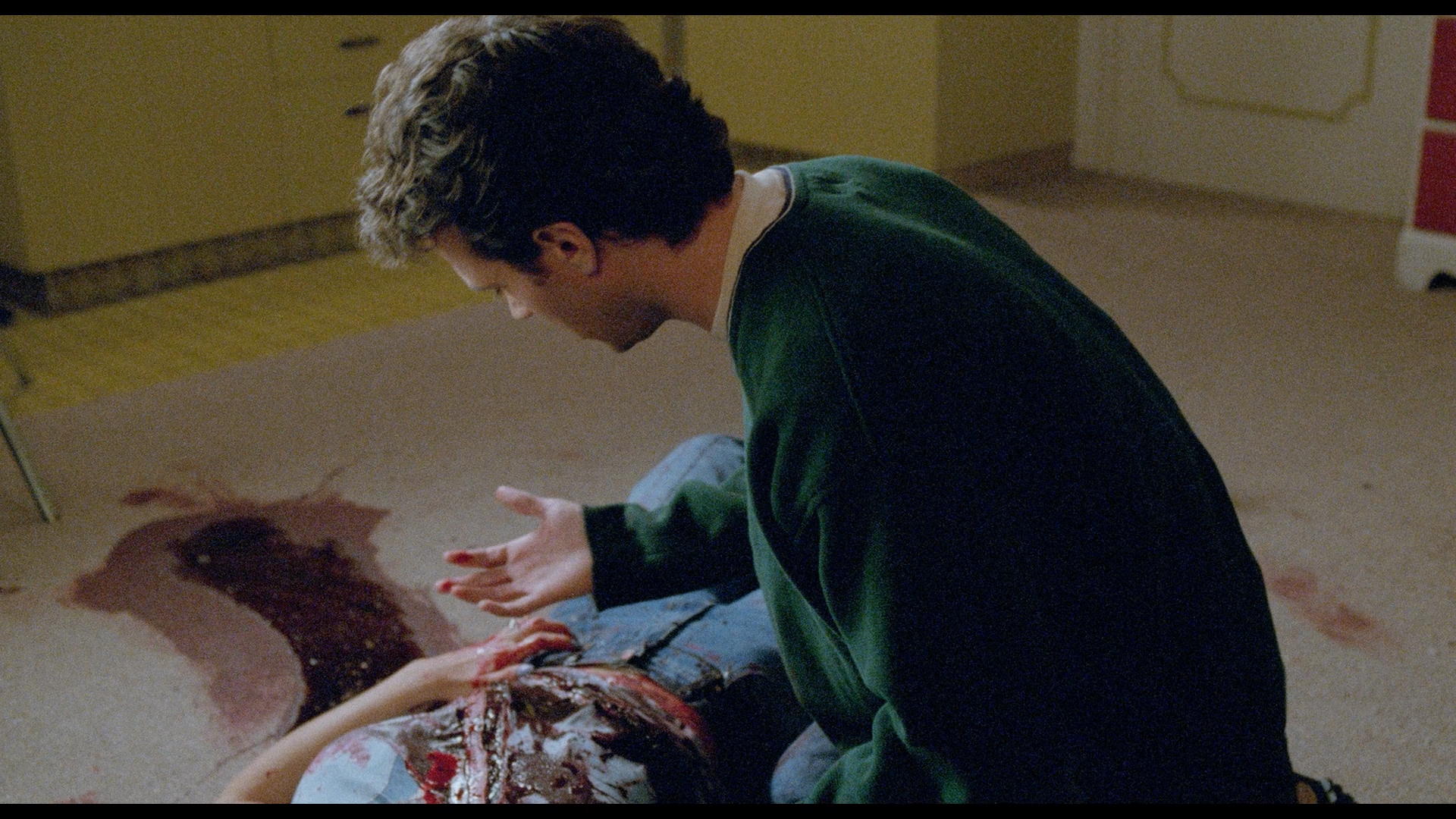
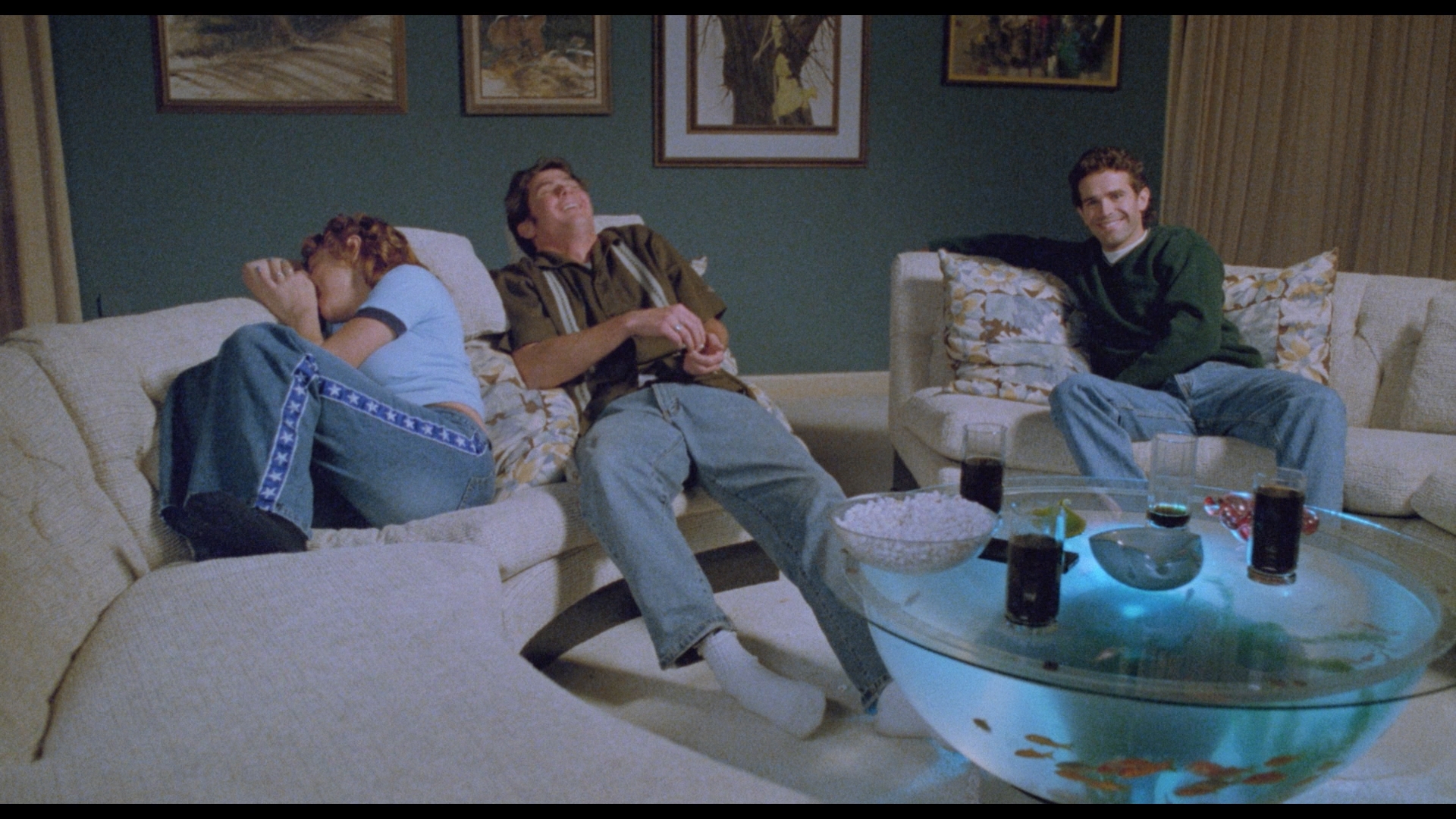 It's doubtful anyone on the planet could have predicted this one would get the red carpet treatment on Blu-ray from Arrow Video, but that indeed came to pass in 2019 with a fully loaded special edition highlighted by a much-needed new transfer scanned in 2K from the original negative. It's a gargantuan improvement, which shouldn't be surprising given the two decades of technological advances we've had, with a great deal of extra image info visible, layers of new textures that were never legible before, and greater legibility during the many dark stalking scenes. DTS-HD MA 5.1 and 2.0 stereo audio options are offered (with optional English SDH subtitles), and while the 5.1 is still plenty of fun with crazy separation effects at time, the 2.0 sounds more natural when it comes to the dialogue and music mix. Try both and see which one you prefer. A surprisingly lighthearted and breezy audio commentary with co-directors Daniel Liatowitsch and David Todd Ocvirk focuses on the production aspects and the many lessons they learned as first-time filmmakers, openly copping to the "homages" to other films and sharing lots of tales from the set including a funny bit about their unorthodox shared cameo and memories of shooting at that memorable main house in Nebraska. The featurette "Real World Massacre: The Making of Kolobos" (22m10s) brings back both directors and co-writer/producer Nne Ebong to offer a broader view of the film's creation including the specifics of the Real World inspiration, the script's take on young people hungry for fame, the nods to Italian horror cinema, and the very limited budget that still allowed them to shoot on 35mm. "Face to Faceless" (9m44s) with actor Ilia Volok (who gets to execute the memorable face-peeling scene and plays the recurring boogeyman) explaining how his "acting inside out" approach played a role in how he treated the camera. In "Slice & Dice: The Music of Kolobos" (8m37s), composer William Kidd explains how he got involved through his connections at USC and faced challenges having a little toddler running around while he was scoring a gory horror movie. Also included are a production photo gallery and a Liatowitsch Super 8 short film, "Superhelden" (10m6s), made when he was 12 and featuring optional, rather poignant director commentary. It's about as different from this film as you can get, following a group of kids as they decide to throw together an impromptu punk rock act. The original trailer is included along with a 15th anniversary one created for a single-night screening, while the first pressing also comes with an illustrated booklet featuring new liner notes by Phillip Escott.
It's doubtful anyone on the planet could have predicted this one would get the red carpet treatment on Blu-ray from Arrow Video, but that indeed came to pass in 2019 with a fully loaded special edition highlighted by a much-needed new transfer scanned in 2K from the original negative. It's a gargantuan improvement, which shouldn't be surprising given the two decades of technological advances we've had, with a great deal of extra image info visible, layers of new textures that were never legible before, and greater legibility during the many dark stalking scenes. DTS-HD MA 5.1 and 2.0 stereo audio options are offered (with optional English SDH subtitles), and while the 5.1 is still plenty of fun with crazy separation effects at time, the 2.0 sounds more natural when it comes to the dialogue and music mix. Try both and see which one you prefer. A surprisingly lighthearted and breezy audio commentary with co-directors Daniel Liatowitsch and David Todd Ocvirk focuses on the production aspects and the many lessons they learned as first-time filmmakers, openly copping to the "homages" to other films and sharing lots of tales from the set including a funny bit about their unorthodox shared cameo and memories of shooting at that memorable main house in Nebraska. The featurette "Real World Massacre: The Making of Kolobos" (22m10s) brings back both directors and co-writer/producer Nne Ebong to offer a broader view of the film's creation including the specifics of the Real World inspiration, the script's take on young people hungry for fame, the nods to Italian horror cinema, and the very limited budget that still allowed them to shoot on 35mm. "Face to Faceless" (9m44s) with actor Ilia Volok (who gets to execute the memorable face-peeling scene and plays the recurring boogeyman) explaining how his "acting inside out" approach played a role in how he treated the camera. In "Slice & Dice: The Music of Kolobos" (8m37s), composer William Kidd explains how he got involved through his connections at USC and faced challenges having a little toddler running around while he was scoring a gory horror movie. Also included are a production photo gallery and a Liatowitsch Super 8 short film, "Superhelden" (10m6s), made when he was 12 and featuring optional, rather poignant director commentary. It's about as different from this film as you can get, following a group of kids as they decide to throw together an impromptu punk rock act. The original trailer is included along with a 15th anniversary one created for a single-night screening, while the first pressing also comes with an illustrated booklet featuring new liner notes by Phillip Escott.ARROW VIDEO (Blu-ray)
YORK (DVD)
![]()